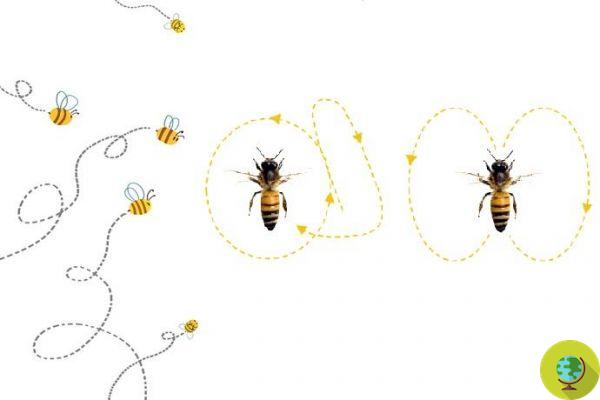
Did you know that bees can dance too and use movements as a communication tool? Animals never cease to amaze us and many things that in the past seemed to be the exclusive prerogative of man, now we find them in insects and beyond.
He is about to end up run over, his mother saves him
Did you know that even the api can they dance and use movements as a communication tool? Animals never cease to amaze us and many things that in the past seemed to be the exclusive prerogative of man, now we find them in insects and beyond.
We often talk about bees, which are essential for the existence of our planet and recently the European Union has also noticed that it has banned pesticides that endangered the life of pollinating insects.
But back to dance, what is it for? Why do bees dance? They do this to communicate to their companions information on the distance, direction in which food is located, ie flowers, pollen, nectar and sources of water.
So despite not having the word, the explorer bees communicate through the movements shown to the worker bees.
But how do they do it? The explorer bees go in search of food, once they have found the nearest source, they return to the hive to communicate with their companions through a so-called wagging dance due to the vibrations that are generated while it is performed.
Circular dance and octagonal dance
At this point each movement takes on a precise meaning. The bees gather around the explorer bee: if the food source is close, like 50 meters from their hive, the bee performs a circular dance, if the distance is greater, the dance takes on the appearance of an 'eight' .
And again, if it moves from the circle upwards, it means that the new source is in the direction of the sun, if on the contrary it cuts downwards, the other bees understand that it is necessary to go in the opposite direction.
If the bee cuts the circle forming an angle, the others understand that they must fly to the right or left with respect to the sun, depending on the angle it makes with respect to an imaginary vertical line. In short, it all seems a bit complicated, but in this nice video you can observe the movements to understand them better:
Read also:
- Why do bees prefer some flowers to others? The secret of dandelion pollen
- How (and why) to host solitary bees in your garden
Dominella Trunfio


























